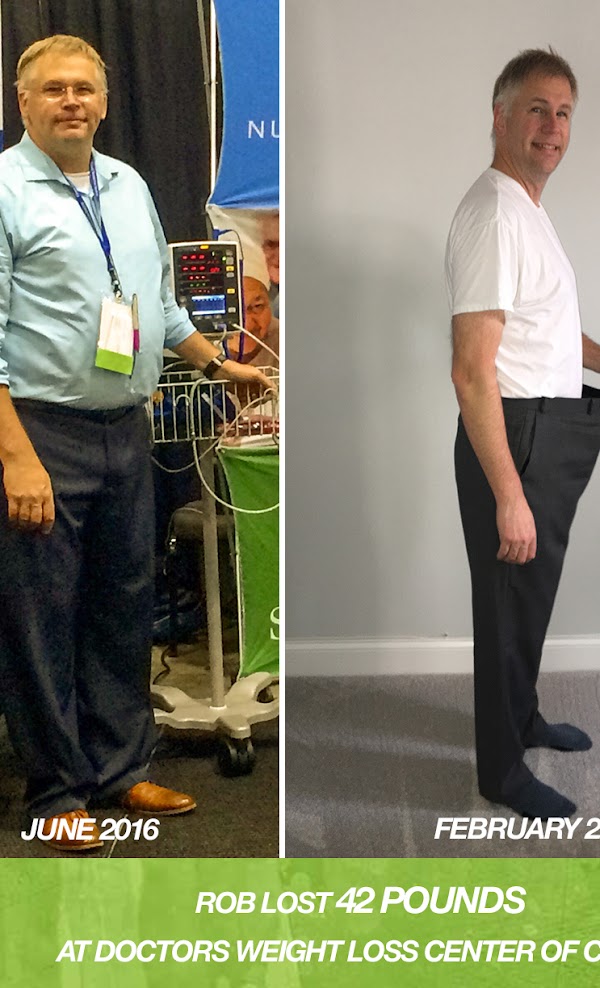
If you are looking to start a ketogenic diet, you will need to calculate your keto macros. This will help you determine how much protein and fat you should be consuming. Also, you will need to know how many calories you should be burning. Ketosis, a metabolic condition in which fat is the primary source for energy, is called ketosis. The process helps you lose weight quickly. You are vital to your health by establishing a ketosis.
You may have to monitor your macros differently depending on your goals and lifestyle. Some people need to be careful about what they eat. A dietician can help you to understand the best way to track your macros. However, it can be a challenge to find the time to do it yourself.
There are many tools that can make this job easier. A keto calculator, for example, can quickly give you a quick estimate of your macros. The calculator will calculate your age, body composition, current level, and dietary preferences. These are vital factors that allow the calculator calculate realistic calories.

It is always a good idea to calculate your macros before starting a new diet. Calculating your macros is a great way of getting an idea of what to eat and what to avoid. If you follow a ketogenic diet, it is a great idea to calculate your macros. This will help you get the best out of your food.
To help you stay on the right track, there are many websites that offer weekly and monthly meal planning. These meal plans often include a wide range of delicious recipes. Choosing a healthy and balanced keto diet is important for your health and will ensure that you get all the nutrients you need. You can use the keto calculator to help you reach your goals, no matter if you're a novice or a veteran.
When calculating keto macros, it's best to select foods high in both protein and fat. Proteins are required for lean mass, maintaining the normal core temperatures of the body, and for protein metabolism. Many vital physiological processes are dependent on fats, such as hormone production and cell proliferation. You can easily increase your fat intake by eating heavy whipping cream or fatty meats, such as bacon or ground beef.
Fat is only nine calories pergram. This compares to protein and carbs. Fortunately, a well-planned ketogenic diet can provide you with enough fat to maintain good health. The ideal goal is to consume 70 percent of your calories in healthy fats.

A good rule of thumb is to consume at least 75g of protein per day. You can get protein from fish, full-fat cheese products, eggs, and even seeds. Increasing your protein intake will help you to gain muscle and reduce the risk of age-related muscle loss.
FAQ
What is the most effective strategy to maintain or lose weight?
While weight loss and weight maintenance strategies look very similar, there are still some differences.
Weight loss is more about shedding pounds, while weight maintenance is more about maintaining those lost pounds.
The main difference between the two is that when you lose weight, you are trying to shed pounds, whereas when you maintain the weight, you are trying to keep them.
Both require commitment and discipline. Weight loss takes more effort, as you must do something, while weight maintenance requires less effort. After all, you have to stay disciplined.
Both cases require that you exercise and eat healthy foods.
To lose weight, you must change your eating habits. You also need to exercise regularly.
Whereas weight maintenance is much simpler because you have to stay disciplined. To maintain weight, you must eat healthy foods and exercise regularly.
So what should you choose? Consider your current life and lifestyle before you make a decision.
It is possible to lose weight if you only eat fast food every now and again and do not exercise as much.
If you eat healthy foods, exercise often, and eat well, your weight will likely be maintained.
It comes down ultimately to personal preference.
It is important to realize that losing weight does not necessarily mean becoming thinner.
You can feel happier and healthier by losing weight.
You can lose weight by changing your eating habits or exercising more often.
You'll get results faster than you ever thought possible.
What is the difference between a vegan and other diets?
A vegan diet differs from other diets because it doesn't contain meat, dairy, or eggs. Because it does not contain animal products, vegans are prohibited from eating dairy, milk, and butter.
The main difference between a vegan diet and other types is that vegans do not eat meat, fish, poultry, or dairy products. This is why vegans often refer to themselves as vegetarians.
Vegans also avoid consuming honey, gelatin, leather, wool, silk, feathers, fur, cosmetics tested on animals, and most processed foods.
Veganism is a dietary choice that promotes compassion for animals and environmental sustainability. It rejects the consumption of animal products because of the suffering and death caused by factory farming and the damage done to animals through the use of hormones, antibiotics, and other chemicals used during slaughter.
Veganism is a belief in vegetarianism. This means that animal flesh and secretions are reduced, not eliminated.
Vegans tend to eat a plant-based diet. However, they do consume some seafood such as nutritional supplements and fruits and vegetables.
Vegans are often called "vegetarians" as they avoid meat, poultry, and fish. Technically vegans should avoid animal products such as dairy and eggs. But the term "vegetarian" is commonly used to refer to those who completely avoid these three categories.
Many people who call themselves vegans eat less that five ounces of meat per day (roughly 1/4 pound).
While vegans may include some dairy products or eggs in their diets in order to obtain sufficient protein, it is not a common practice.
Lacto vegetarians, also known as Lacto-ovos, eat dairy products and eggs. They avoid meat. They also eat poultry, shellfish, and insects. These people can be classified flexitarians with regard to meat, but strictly adhere the vegetarian lifestyle.
Ovo-lacto vegans eat eggs and dairy products, while avoiding red meat. They might also eat shellfish, poultry, and fish.
Pescatarians can be vegetarians who enjoy fish. Pescatarians must be mindful of their cholesterol levels as fish can have high amounts of fat. They prefer to eat non-fried or low-fat varieties of fish.
Two types of vegans can be further classified: strict and flexibile. Strict vegans completely abstain from any animal product, including all forms of dairy and eggs. Flexible vegans are restricted in the animal products they eat. One egg might be eaten every two weeks, or they may choose to eat skimmed milk in place of whole milk.
There has been an increase in plant-based diets over the past few years. This is because health-conscious consumers are looking to lose weight and manage their diabetes. Between 2007 & 2010, the American vegan population grew by 50%. According to industry estimates the number reached 2.5 million in 2016.
What is the 40-30-30 diet plan?
The 403030 Plan is an easy-to follow program that will help you lose weight fast, and keep it off throughout your life. This program is a combination three powerful strategies that will help you lose weight faster and control your appetite.
This program offers:
-
A comprehensive food diary that allows you to track your daily calorie intake and identify hidden foods that sabotage your efforts.
-
This exercise program combines strength training with cardio exercises in order to increase metabolism and lose body fat.
-
Your individual nutrition plan is based on your results.
You'll also get weekly emails with tips and motivation for your journey to better overall health.
You have nothing to lose except unwanted pounds!
What foods clean arteries out?
Healthy eating habits are the best way for your heart to stay healthy. What does this mean exactly? Well, there are lots of ways to do that. One of them is eating more fruits and vegetables.
Fruits and veggies are packed full of antioxidants which help protect against disease and improve overall health. Antioxidants can also help prevent cloggedarteries by fighting inflammation.
But there are other ways to reduce the amount of cholesterol in your diet too. You can lower your chance of suffering from a heart attack by cutting down on saturated fats like butter and trans-fatty acid (found in fried foods).
You can increase the amount of fiber you eat to help keep your blood moving freely. LDL cholesterol, which is bad cholesterol that can lead to cardiovascular problems, can be reduced by fiber.
Other than what you eat, there are many other factors that can affect your heart health. You can develop heart disease by a variety of factors, including stress, smoking habits, lack of exercise and obesity.
Talk to your doctor about the amount of fiber and other nutrients that you should consume each day if you have been diagnosed with cardiovascular disease. You may need to take medications or make lifestyle changes to stay healthier.
What is your favorite healthy drink?
There is no one healthy drink. Some drinks are healthier than water, but none are the best.
It is simple: the best drink is the one that you love. If we ask ourselves "What's the healthiest thing?" we really mean "What's my favorite drink?"
We shouldn't be surprised to find that the answer can vary widely depending on where one lives. Even within one country, the answer is different.
In Japan, green tea is the top choice, while New Zealand prefers coffee. While milkshakes are popular in India, beer reigns supreme in Australia.
It doesn't really matter which drink is healthiest, because everyone has their own preferences.
What matters is whether the drink is healthy or not. The definition of healthy varies from person to person.
A glass of wine may be unhealthy for someone, but it might be perfectly fine for another. A glass of red wines and a slice or cake may not be healthy for someone, but they might be fine for someone else.
There is no universal definition for healthiness. Even more important, there is no universally accepted method to measure healthiness.
Also, one drink cannot be said to be healthier than the other. You cannot make such an assertion without knowing the amount of alcohol in each drink.
Even if this was known, the amount of alcohol we consume will still pose a problem. A white wine is far less caloric than a red wine.
Even though we can compare different beverages according to their calorie count, it is impossible to say which one is better.
It is possible to devise a formula for calculating the alcohol content of each beverage. But, it would only account for the alcohol amount and not its composition.
Even if we could, we still would need to know the exact composition. This information is not always accessible.
Some restaurants do not reveal the ingredients in their meals. Some people don’t want anyone to know what they eat.
But the bottom line is that we cannot tell which drink is healthier.
What are the five keys to a healthy diet and lifestyle?
You may have heard that you are what you eat. A healthy diet is made up of five key components.
These include eating plenty fruits and vegetables, avoiding processed foods and drinking lots of water.
The first three elements are essential for overall well-being, while the second and third are crucial for maintaining weight control.
These nutrients can be added to your daily food intake to make sure you get enough.
A variety of fresh produce including fruits, leafy and whole grains should be included in your diet. These foods are rich in vitamins A, C and E that help prevent heart disease and cancer.
Avoid processed food, which may include those with artificial ingredients and preservatives. This includes soft drinks and candy bars, cookies, chips, and chocolate.
Water intake of eight glasses daily can help keep your body hydrated. This will prevent you from becoming dehydrated and keep your metabolism working efficiently.
An important part of a healthy lifestyle is exercise. You run the risk of developing obesity-related diseases like heart disease, stroke, and diabetes if you don't exercise.
Also, try to limit your consumption of alcohol. Drinking alcohol increases blood pressure, causes headaches and can cause liver damage.
These tips will get you on the right track to a healthier and happier life.
Statistics
- *Note: The 2020-2025 Dietary Guidelines for Americans recommend limiting saturated fat to less than 10% of total daily calories. (mayoclinic.org)
- Overall (tie) Whole30 lacks scientific support and is severely restrictive, according to the experts. (health.usnews.com)
- Another study in adults with obesity over 12 weeks found that the DASH diet helped decrease total body weight, body fat percentage, and absolute fat mass in study participants while preserving muscle strength (healthline.com)
- The ideal amount of protein at breakfast is about 30 grams, according to a 2018 review by nutrition researchers at Purdue University. (prevention.com)
External Links
How To
Healthy Eating Guidelines For Kids
To be healthy, children need to eat a healthy diet. Children who eat well have a tendency to be healthier adults. Here are some guidelines that you should follow when feeding children.
-
Sugary drinks should be limited. Sugary beverages are responsible for more than half of the added sugar intake in kids aged 2-18.
-
Limit juice. Juice is loaded with empty calories and little nutrition.
-
Avoid fried foods. Fried foods can raise blood cholesterol levels and increase the risk of developing heart disease.
-
Consume whole grains. Whole grains are rich in nutrients like dietary fiber, vitamin B, magnesium, phosphorous, protein, zinc, and protein.
-
Consume lots of fresh produce. Fresh fruits and veggies are full of vitamins, minerals, fiber, and other nutrients. They also have less sodium than processed and packaged foods.
-
Choose lean meats. Lean meats are high-quality and provide high-quality protein without the added fats and calories of fatty cuts.
-
Be cautious with snack foods. Snacks can increase calories and add unhealthy ingredients to meals. Many snack products are made with refined flour, hydrogenated oils, artificial colors, and preservatives.
-
Every day, ensure that your child has breakfast. Breakfast boosts metabolism and provides energy for daily activity.
-
Try out new recipes. Experiment with different recipes to find ones your family likes. To change the flavor profile of dishes, try adding herbs and spices.
-
Get active. Physical activity is an important part of childhood. It improves mood, concentration, memory and mood. Exercise also promotes weight control.
-
Get outside. Enjoy the natural beauty of nature. Enjoy being outdoors and enjoy hiking, biking or swimming.